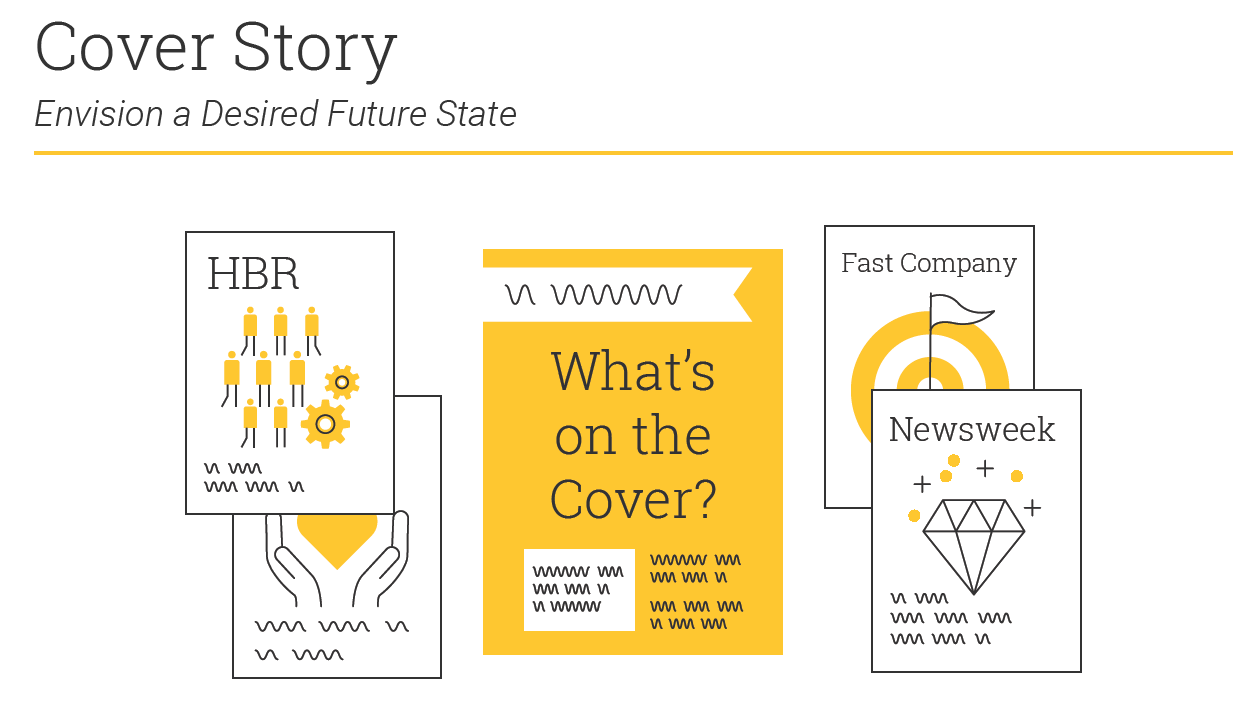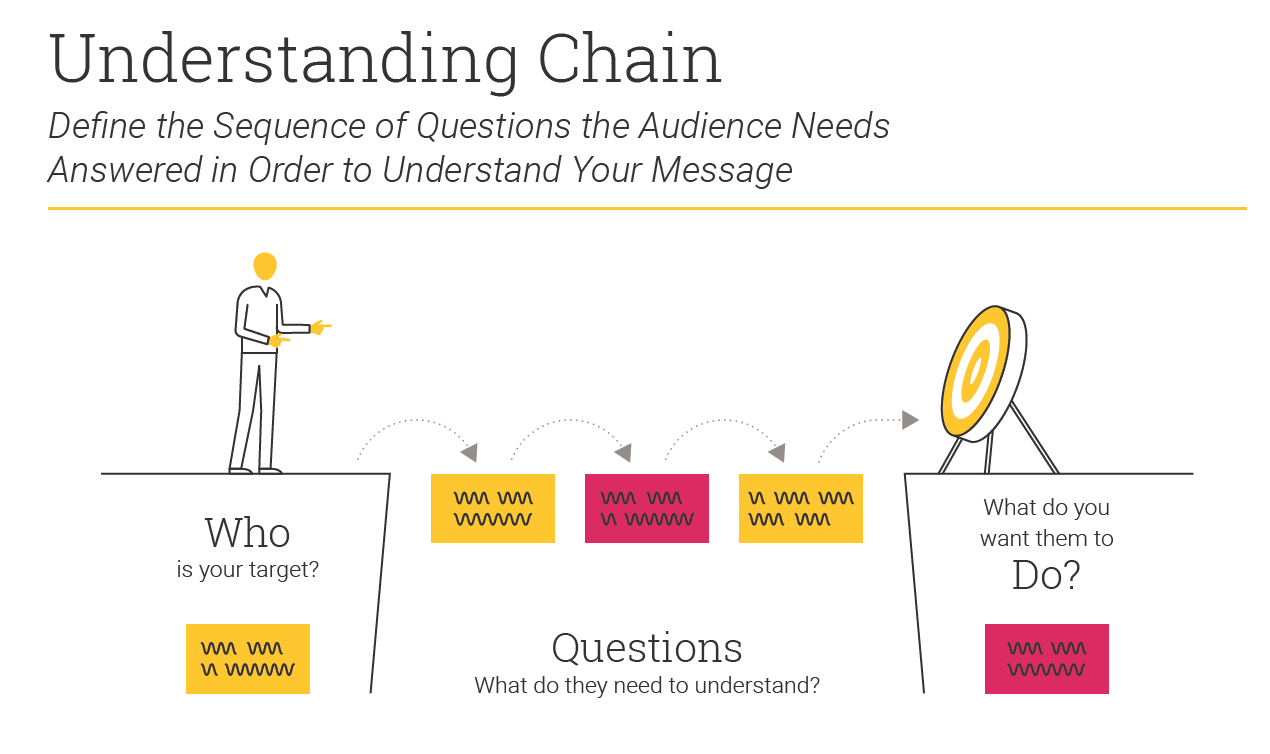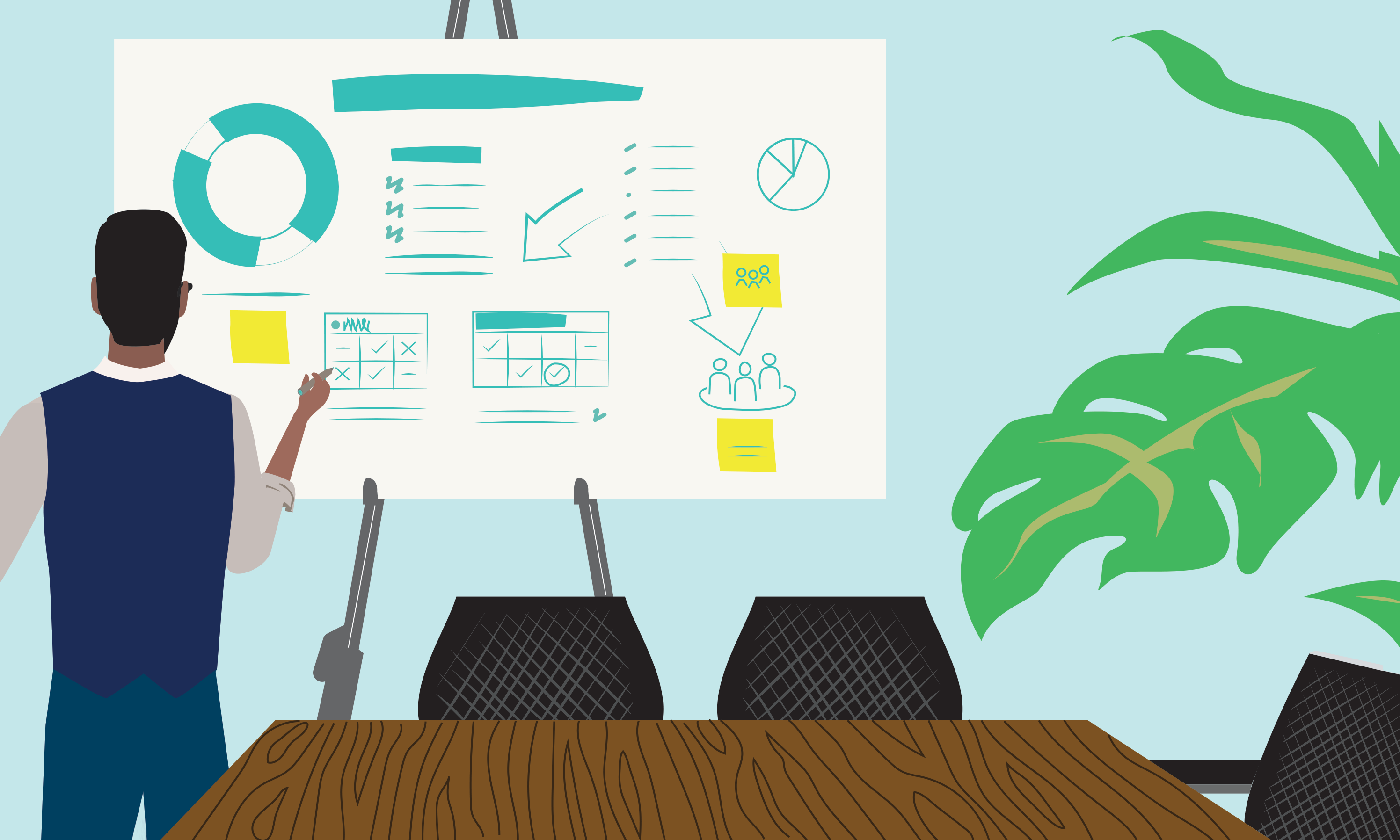Once you delve into visual thinking, it’s remarkable how it opens exciting new ways to create and communicate with the world—even if you’ve already had some exposure to the practice.
This was the case for Braden Kelley of Oracle and Benjamin Noble of Ford Motor Company.
Sought-after innovation specialists, Kelley and Noble attended an XPLANE Visual Thinking Bootcamp to explore the possibilities of leveraging visual thinking techniques to forward corporate initiatives.
Addressing Organizational Change and Process Improvement with Visual Thinking: Braden Kelley, Oracle
“I’m a notoriously tough grader, but I’d give my XPLANE Visual Thinking Bootcamp experience a 9 out of 10,” shared Braden Kelley, Director of Innovation and Human-Centered Problem-Solving at Oracle in Seattle.
Not a bad grade coming from a man with an MBA from London Business School who has been advising top companies around the world for over 20 years.
An internationally known innovation speaker, workshop facilitator, and two-time author*, Kelley develops tools that help leaders and teams discuss organizational change in a collaborative and visual way.
Attending an XPLANE Visual Thinking Bootcamp was a perfect fit for this work.
“I wanted to explore visual learning as another pathway for advancing my objectives at Oracle,” he explains. “XPLANE’s immersive learning experience gave me a great overview of visual language and its myriad uses.”
Kelley, who had some familiarity with visual learning prior to the workshop, particularly appreciated the workshop’s structure and accessibility—not to mention the practical tips he picked up. “I can’t draw,” he admits, “but I can draw better since attending the bootcamp.”
He also left the bootcamp with helpful frameworks (examples below) and ways to capture data on the fly using visual thinking—methodologies and skills he’d like to continue developing for his work.

Download Cover Story Worksheet

Download Understanding Chain Worksheet
“It will take practice,” Kelley admits. “But one of the key advantages of visual thinking—whether it be through drawing or putting words on sticky notes—is being able to quickly depict a current state and define the breadth and depth of a problem to be solved. It prevents you from missing elements and solving the wrong problem.”
He sees multiple applications for visual thinking—particularly in the area of process improvement.
“Visual thinking gives you an additional tool to get to the results you want.”
Enhancing Learning with Visual Thinking: Benjamin Noble, Ford Motor Company
As a Human-Centered Design Thinking Catalyst at Ford in Dearborn, Michigan, Benjamin Noble is constantly looking for ways to make learning, performance improvement, and instruction more efficient and effective.
In his ever-evolving role at Ford, Noble combines learning and Design Thinking practices to help shift existing mindsets around problem-solving.
These days, he’s less a catalyst and more a learning and community activator. His mandate? To drive progress through empathy, creativity, and design.
“Design thinking (which differs from visual thinking) is central to Ford’s strategy,” he shares. “We’re bringing this new way of thinking to teams across the organization through workshops, coaching, and other resources to enable their design thinking practice.”
Visual Thinking Accelerates Learning
Faced with finding ways to accelerate learning at Ford, Noble recalled how storytelling and visuals had significantly enhanced learning in his own life. “Stories and pictures stay with people.”
He’s right. Biologically speaking, about 75% of our brain’s sensory neurons are dedicated to visual processing.
As he looked for a way to fuse storytelling with sketching to enhance training, he stumbled across visual thinking. He educated himself on the subject and was excited when his manager suggested that he attend XPLANE’s Visual Thinking Bootcamp.
Visual Thinking Offers Critical Insights
Day 2 of the bootcamp was particularly powerful for Noble because participants were asked to use sketching as an organizational strategy.
“Visual thinking sketches are what you would call a low-fidelity approach used in design thinking,” he explains. “While you can engage with someone or read a paragraph from a book, it won’t have the same impact as a sketch with a few words to connect pictures and words.”
That’s what Noble finds exciting about visual thinking. It lets you bring a story to life. People can interact with it, which connects them, enabling empathy and greater understanding.
“Visual thinking is not the foundation of our practice at Ford,” Noble explains. “Our focus is on how to solve complex problems using design thinking—but visual thinking helps us develop our problem statement. It quickly gives us insight into knowing what we’re trying to solve.”
Simply put, visual thinking is a tool that helps get your design thinking process off to a great start.
What Else Can Visual Thinking Do?
Overflowing with ideas, Noble sees endless applications for visual thinking. Here are some of his top suggestions:
![]() Get to know your customers. Visual thinking can help you understand a customer’s pain points and passion points—giving you insights into issues you need to address.
Get to know your customers. Visual thinking can help you understand a customer’s pain points and passion points—giving you insights into issues you need to address.
![]() Accelerate understanding. Words have different meanings to different people, but if you sketch something out, people can identify with it more quickly—enabling quicker consensus.
Accelerate understanding. Words have different meanings to different people, but if you sketch something out, people can identify with it more quickly—enabling quicker consensus.
![]() Engage people of all ages. Visual thinking is not just for adults. “I’ve started using visual thinking at home during family meetings to get the kids’ ideas or to envision how we can become a better family. My 15-year-old likes it so much that he asks when we’ll have our next family meeting!
Engage people of all ages. Visual thinking is not just for adults. “I’ve started using visual thinking at home during family meetings to get the kids’ ideas or to envision how we can become a better family. My 15-year-old likes it so much that he asks when we’ll have our next family meeting!
![]() Break the ice. At a recent design thinking workshop, Noble asked participants to draw themselves as a superhero. They sketched out concepts on large sheets of paper attached to the walls. The exercise engaged them, put people at ease, and prepared them for collaborative work ahead.
Break the ice. At a recent design thinking workshop, Noble asked participants to draw themselves as a superhero. They sketched out concepts on large sheets of paper attached to the walls. The exercise engaged them, put people at ease, and prepared them for collaborative work ahead.
![]() Enhance communication. At Ford, Noble spends a lot of time helping left-brained engineers exercise their right brains. “Engineers often haven’t practiced using that side of their brains, so it’s challenging for them to let go of the known and embark on the unknown,” comments Noble. “But when they do, you see a transformation. The next thing you know, their drawings become elevated and they have a new tool for communicating complex thoughts at their fingertips.”
Enhance communication. At Ford, Noble spends a lot of time helping left-brained engineers exercise their right brains. “Engineers often haven’t practiced using that side of their brains, so it’s challenging for them to let go of the known and embark on the unknown,” comments Noble. “But when they do, you see a transformation. The next thing you know, their drawings become elevated and they have a new tool for communicating complex thoughts at their fingertips.”
*Braden Kelley’s books include Charting Change: A Visual Toolkit for Making Change Stick and Stoking Your Innovation Bonfire: A Roadmap to a Sustainable Culture of Ingenuity and Purpose.
________________
Your Thoughts?
Finally, if you have thoughts to share or questions about visual thinking, we would love to hear from you.
